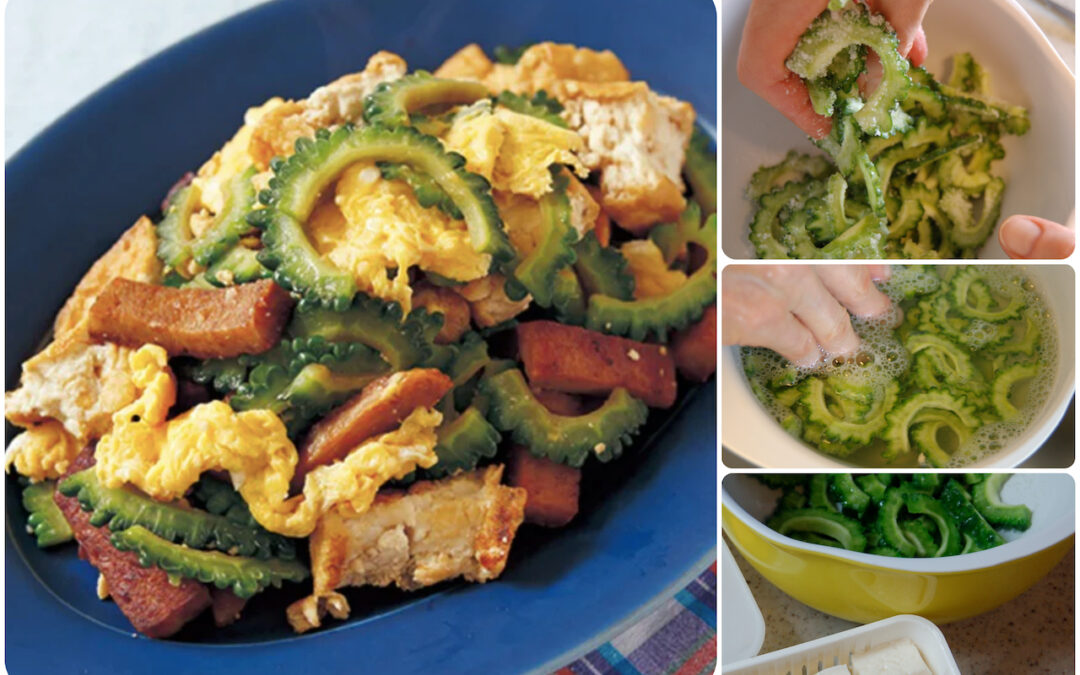
by Elizabeth Andoh | Aug 12, 2022 | Kitchen Culture, Summer
チャンプル・CHAMPURU In the local dialect CHAMPURU means “hodgepodge.” It is essentially a stir-fry; the signature dish of Okinawa. Every household will have its own version though most will include some sort of tōfu and lots of vegetables, most likely bitter melon or what...
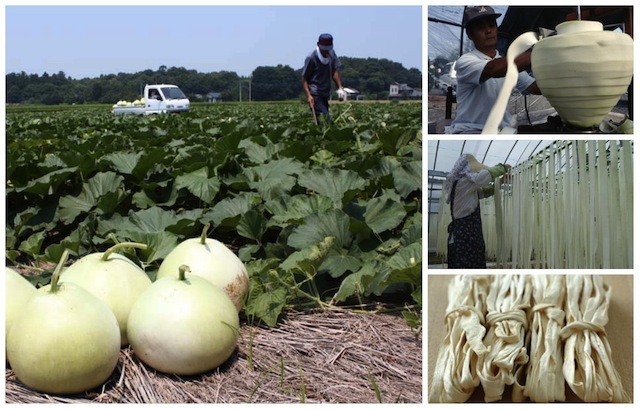
by Elizabeth Andoh | Jul 10, 2022 | Kitchen Culture, Summer
干瓢・かんぴょう・KAMPYŌ What is kampyō and how is it processed into edible ribbons? Bulbous fukubé gourds are harvested in the summer and set on a spinning wheel against a sharp blade. The ribbons of gourd that get shaved off are then hung to dry in the sun or well-ventilated...
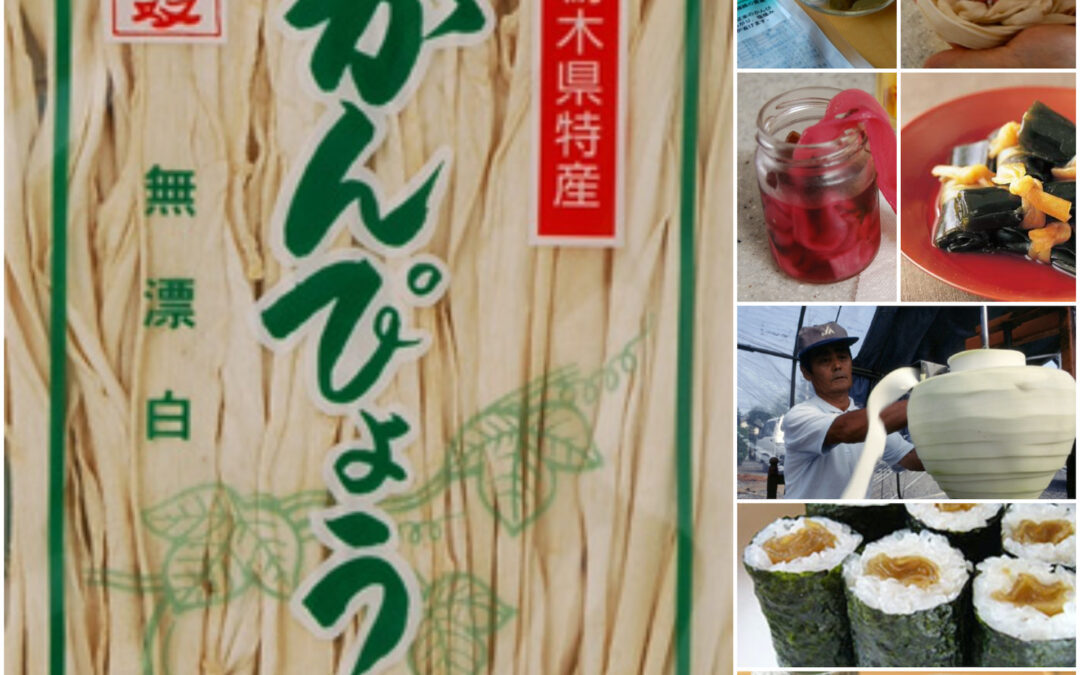
by Elizabeth Andoh | Jul 10, 2022 | Kitchen PROJECTS, Year-Round
干瓢・かんぴょう・KAMPYŌ This Kitchen PROJECT is about using KAMPYŌ, sun-dried fukubé gourd ribbons in YOUR kitchen. Be sure to source UNBLEACHED (無漂白 mu hyō haku) gourd ribbons so that you can use the softening liquid as a tasty stock. Gourd ribbons are used to tie up any...

by Elizabeth Andoh | Jun 29, 2022 | Kitchen PROJECTS, Summer
PROJECT Yakumi 薬味 This Kitchen PROJECT is about making YAKUMI, fresh herb and spice mixtures, in YOUR kitchen. Use yakumi to top dishes such as chilled tōfu, fresh tomatoes or stewed eggplant. Cold noodles served with yakumi to be added to soy-based dips are a...
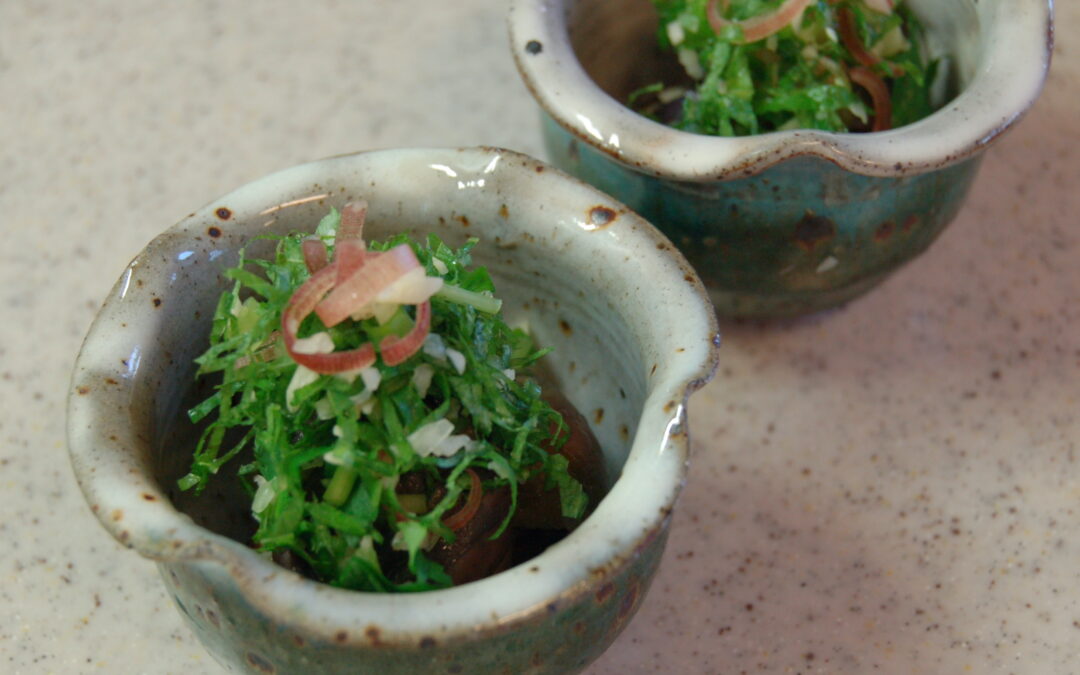
by Elizabeth Andoh | Jun 29, 2022 | Kitchen Culture, Summer
薬味YAKUMI A Lively Mixture of Aromatic Herbs Food cultures around the world employ various aromatic herbs and spices to stimulate the appetite, maximize flavor and promote healthful eating. Japan has a long history of using yakumi, condiments, to provide benefit to the...

by Elizabeth Andoh | May 16, 2022 | Kitchen Culture, Year-Round
ごぼう・牛蒡・Gobō (burdock root; Arctium lappa) Kimpira, named after a folk-hero celebrated for his fervent determination and fiery ways, is a quickly assembled, skillet-stirred vegetable dish finished with an incendiary 7-spice blend. Kimpira frequently appears on the menu...
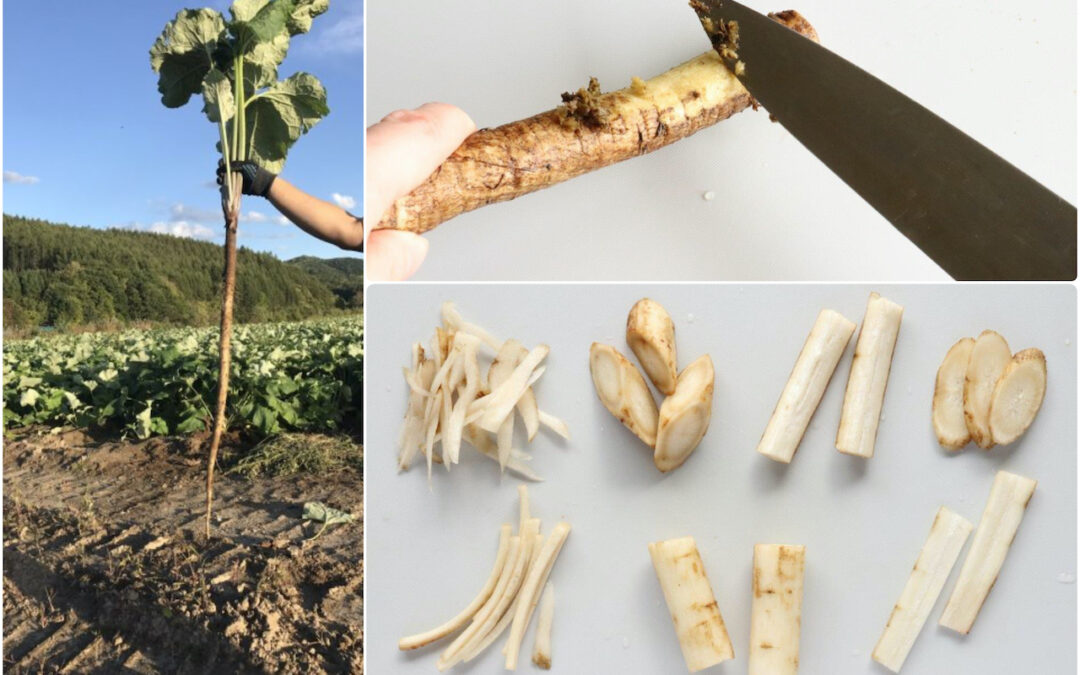
by Elizabeth Andoh | May 16, 2022 | Kitchen PROJECTS, Tools & Techniques
PROJECT Cutting & Slicing This Kitchen PROJECT is about cutting & slicing ingredients to maximize flavor, texture and appearance while minimizing waste. Specific examples below focus on gobō cut three different ways: SASAGAKI 笹掻きSENGIRI 千切りRANGIRI 乱切り These...
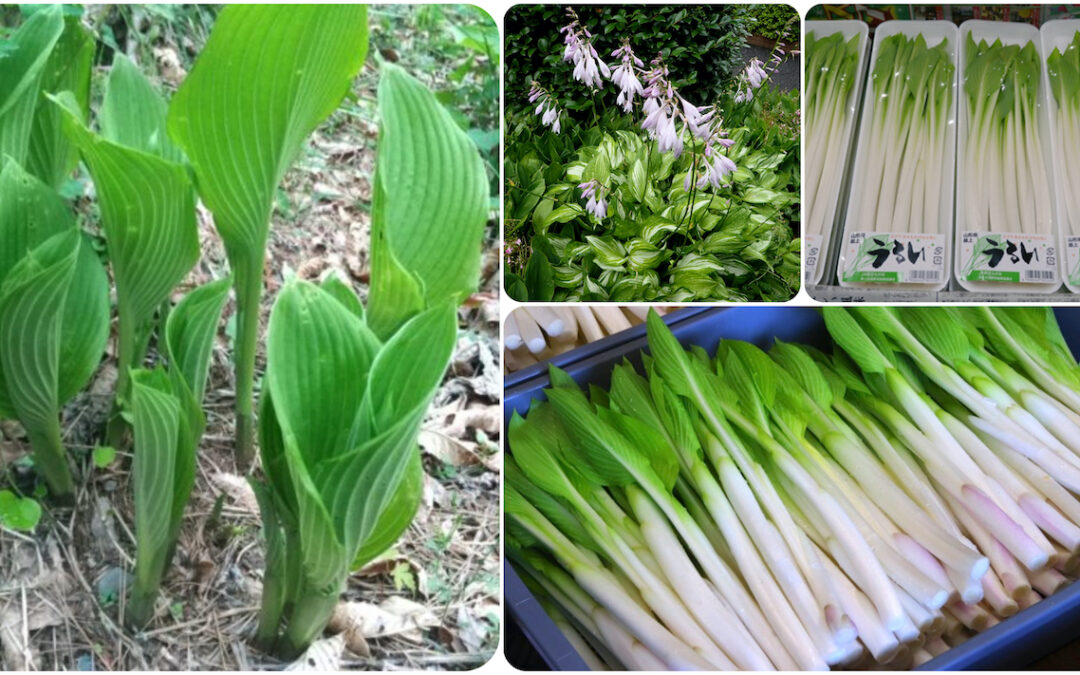
by Elizabeth Andoh | Apr 22, 2022 | Kitchen Culture, Spring
うるい・UruiThe Elusive Taste of Spring Urui (Hosta sieboldiana) is in the lily family; it is often planted as an ornamental in gardens. It thrives in damp soil in areas of partial or dappled shade. It has been cultivated in Japan since the Edo period (1603-1868) though...
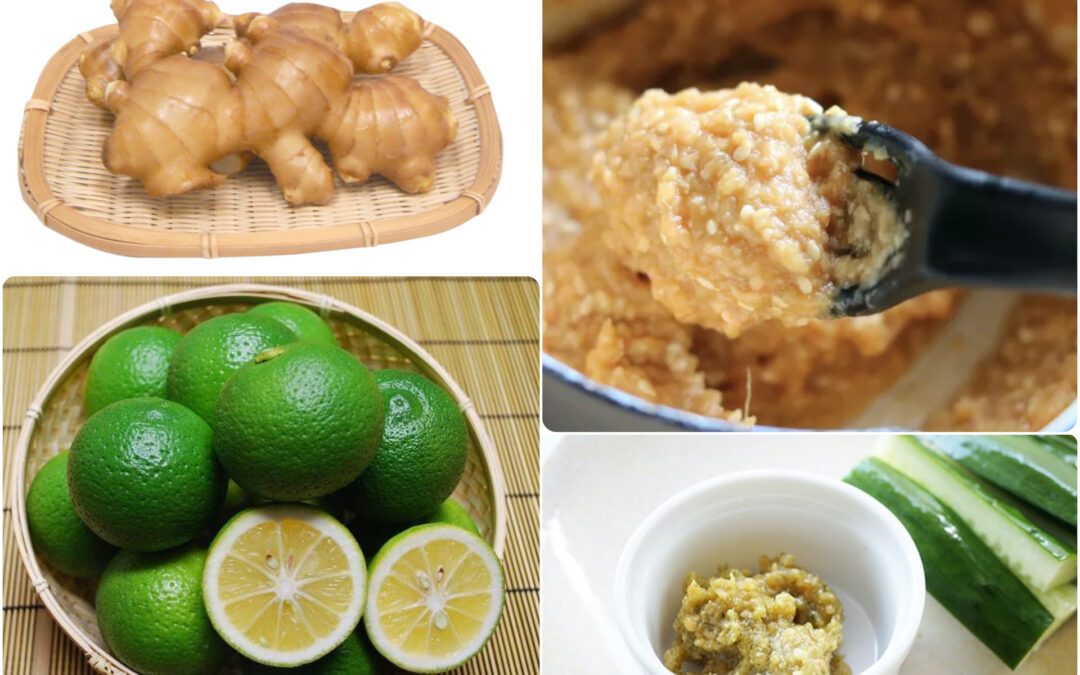
by Elizabeth Andoh | Apr 21, 2022 | Kitchen PROJECTS, Year-Round
PROJECT Flavored Miso This Kitchen PROJECT is about making flavored miso in YOUR kitchen. This page introduces two new flavored miso mixtures, one redolent with fruity kabosu, the other infused with smoky katsuo-bushi flakes. In addition, many recipes for flavored...

by Elizabeth Andoh | Mar 17, 2022 | Kitchen PROJECTS, Tabletop, Tools & Techniques, Year-Round
PROJECT Kushi This Kitchen PROJECT is about making SKEWERED FOOD in YOUR kitchen. For inspiration and recipes to get you started, use these resources: Black Sesame Miso Tōfu DengakuCrunchy Kushi AgéFuki no Tō Miso Dengaku(Vegan & Vegetarian Options) Oden Part...

by Elizabeth Andoh | Mar 17, 2022 | Kitchen Culture, Year-Round
串・KUSHISkewers Galore Because spearing or threading food on skewers makes cooking over a fire easier and more efficient it’s not surprising to find some sort of skewered food in nearly every food culture. There is (Brazil’s) churrasco, (Spain’s)...

by Elizabeth Andoh | Feb 25, 2022 | Kitchen PROJECTS, Year-Round
筑前煮 ・Chikuzen Ni This Kitchen PROJECT is about making CHIKUZEN NI (soy-braised vegetables in the Fukuoka style) in YOUR kitchen. A cross between a stir-fry and a stew, this dish no doubt has as many variations as there are households in Fukuoka. The BASIC RECIPE I...
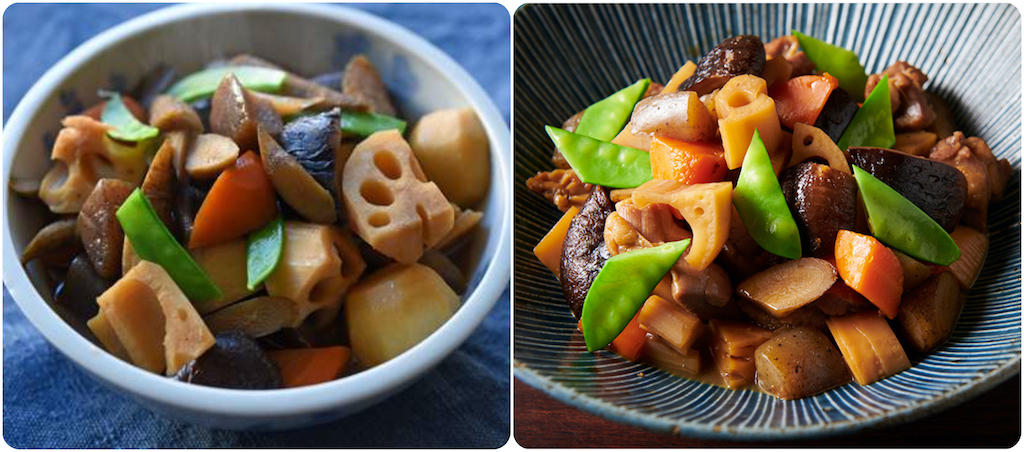
by Elizabeth Andoh | Feb 25, 2022 | Kitchen Culture, Year-Round
筑前煮・Chikuzen NiVegan Version: Soy-Braised Vegetables with Thick Fried TōfuClassic Version: Soy-Braised Vegetables with Chicken Chikuzen is the former name of a province, the area that is today part of Fukuoka Prefecture in Kyūshū. The word “ni” in the title of this...

by Elizabeth Andoh | Feb 20, 2022 | Kitchen PROJECTS, Year-Round
Above, Four Examples of Nyūmen: Hakusai, Carrot and Shiméji (top left); Egg Drop, Shiméji and Scallions (top right); Chicken and Mitsuba with Sanshō (bottom left); Shiitaké, Shiméji, Carrot and Mitsuba. 煮麺 ・Nyūmen This Kitchen PROJECT is about making NYŪMEN (sōmen...
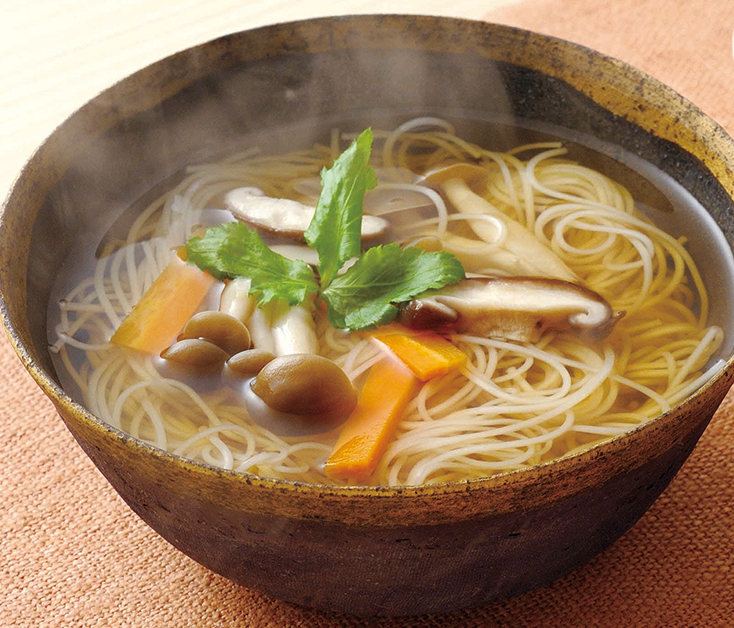
by Elizabeth Andoh | Feb 20, 2022 | Kitchen Culture, Winter
煮麺 ・NyūmenSōmen Noodles Served in Piping Hot Broth Sōmen is usually served chilled, often on chunks of ice. Dipped into a deeply flavored sauce to which condiments have been added, it becomes a survival strategy for hot, humid days. But in Kagawa Prefecture (Shikoku),...

by Elizabeth Andoh | Feb 7, 2022 | Kitchen Culture
柳原 一成 (追悼) A Tribute to Kazunari YANAGIHARA (1942-2022) Shortly after arriving in Japan, I became intrigued with its food and culture. My first forays into the Japanese kitchen were guided by my husband’s family, and by Tokyo neighbors and local shopkeepers. The more...

by Elizabeth Andoh | Jan 25, 2022 | Kitchen Culture, Winter
鰤しゃぶ鍋Buri Shabu Nabé BURI (yellowtail) is fabulous in the winter! If you can source top-quality tenderloins of fish, you could opt for luscious slices of sashimi. Though my favorite way to enjoy fresh buri is swished-through-bubbling-broth buri shabu nabé – barely...

by Elizabeth Andoh | Jan 25, 2022 | Kitchen PROJECTS, Tabletop, Winter
Swished-through-bubbling-broth Buri Shabu Nabé (left) and Shōjin Shabu Nabé (right) しゃぶしゃぶ鍋Shabu Shabu Nabé This Kitchen PROJECT is about making Shabu Shabu Nabé hot-pots in YOUR kitchen. The Japanese have a fondness for naming dishes with onomatopoeia. The name shabu...
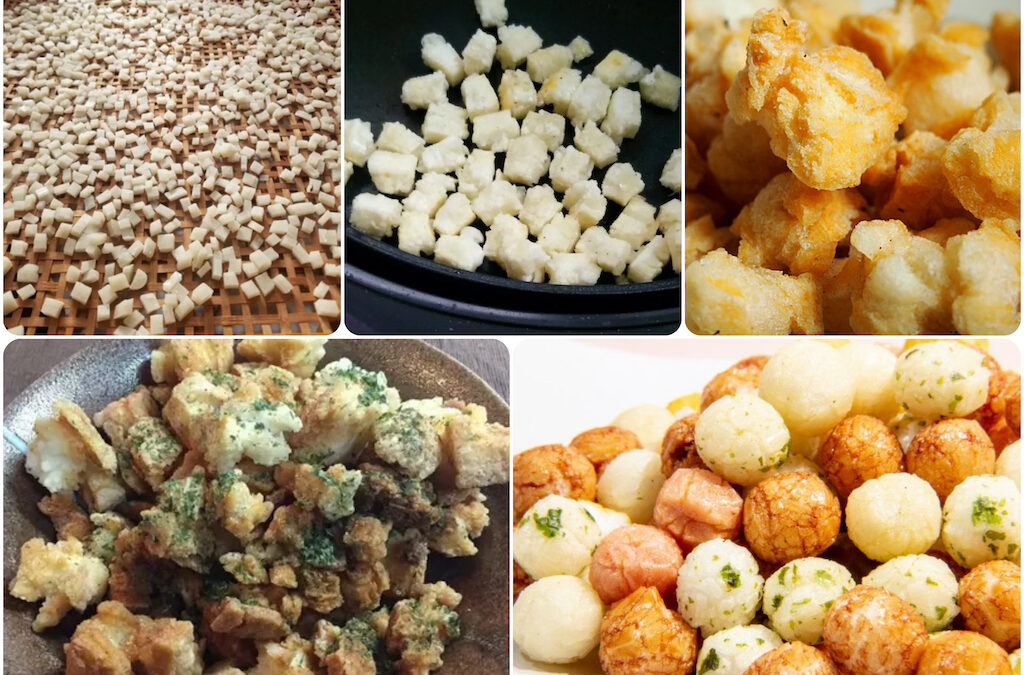
by Elizabeth Andoh | Jan 8, 2022 | Culture, Kitchen PROJECTS, Winter
PROJECT Rice Snacks Crisp-and-Crunchy Rice Snacks are a delicious way to use up leftover omochi. Inevitably after the New Years holidays pieces of omochi remain uneaten. Dried and cracking they can be repurposed into tasty ARARÉ. This Kitchen PROJECT is about making...
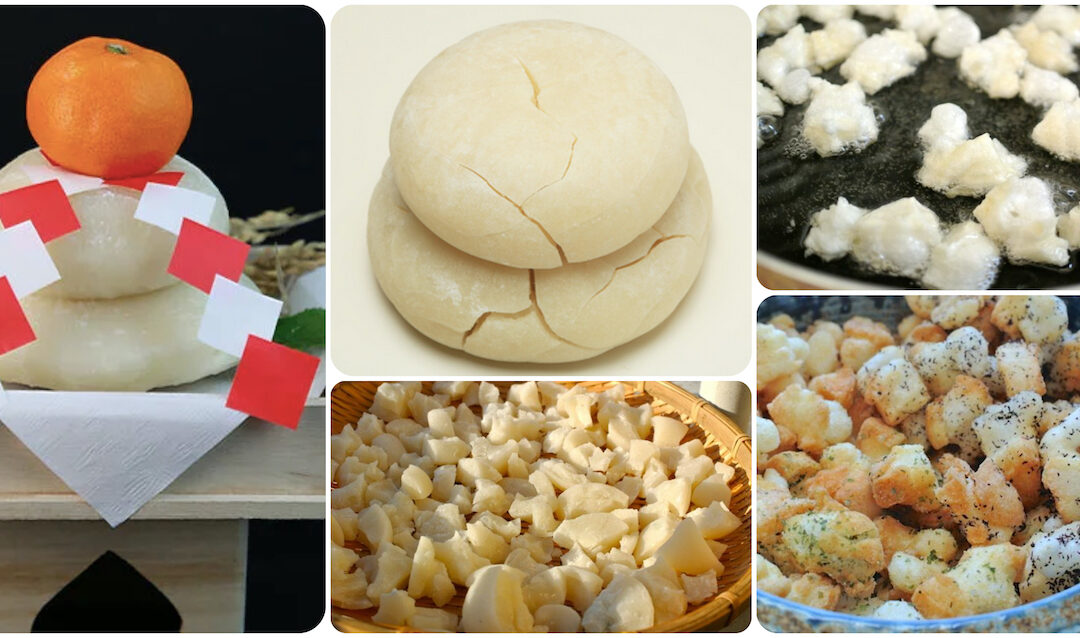
by Elizabeth Andoh | Jan 6, 2022 | Kitchen Culture, Winter
あられ・霰・ARARÉCrisp-and-Crunchy Rice Snacks When listening to the weather report araré means “hailstones” but in the kitchen (or other culinary setting) it means “small cubes” or fine-diced omochi (sticky rice) that has been fried or baked. No doubt the origin of this...





















